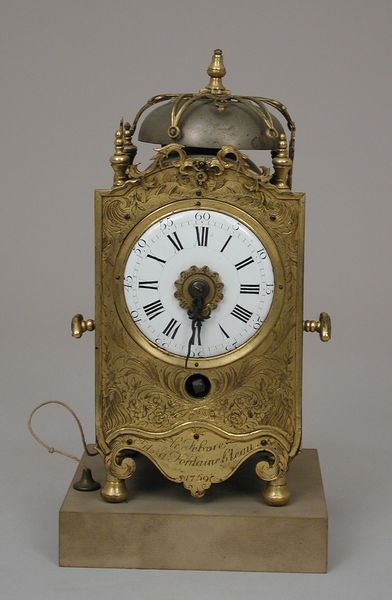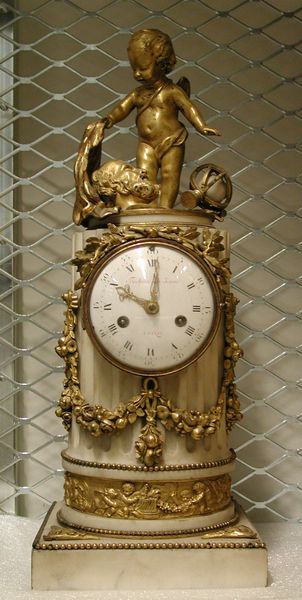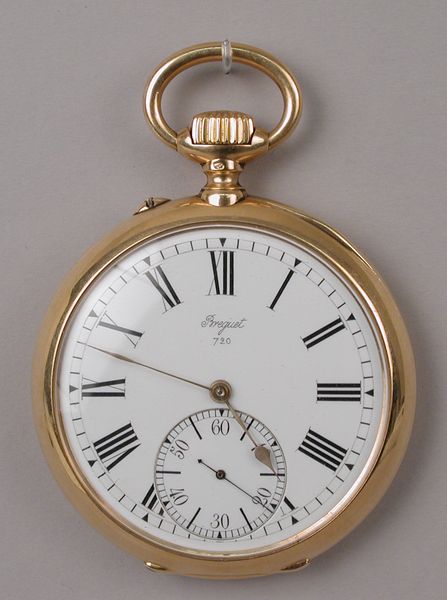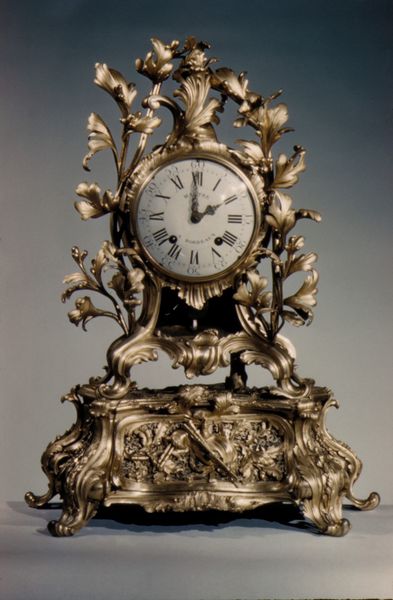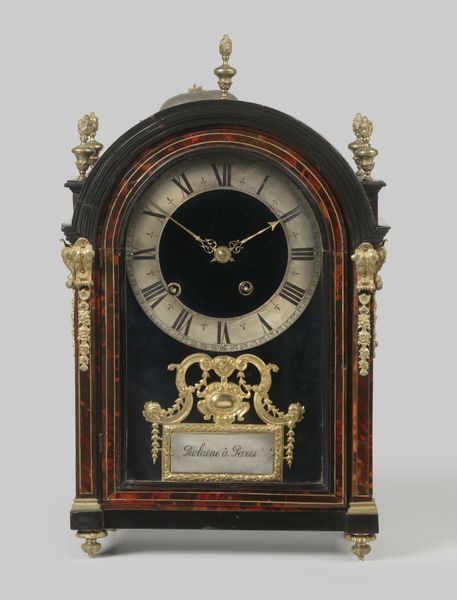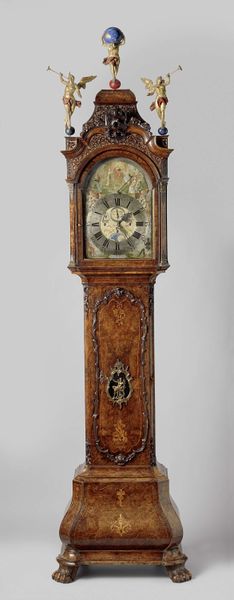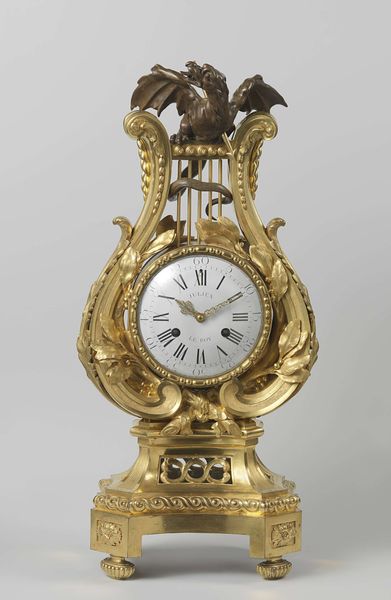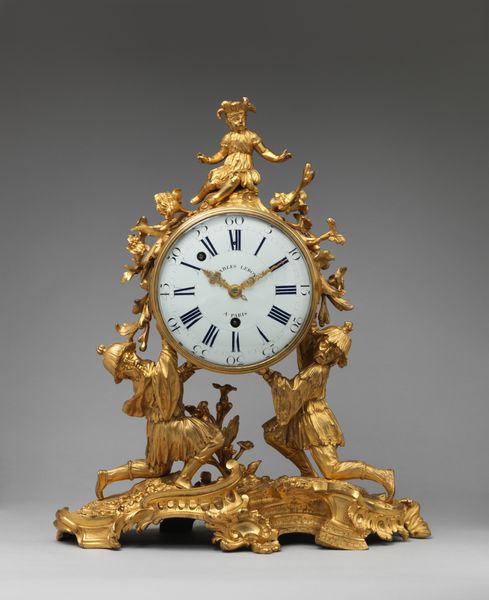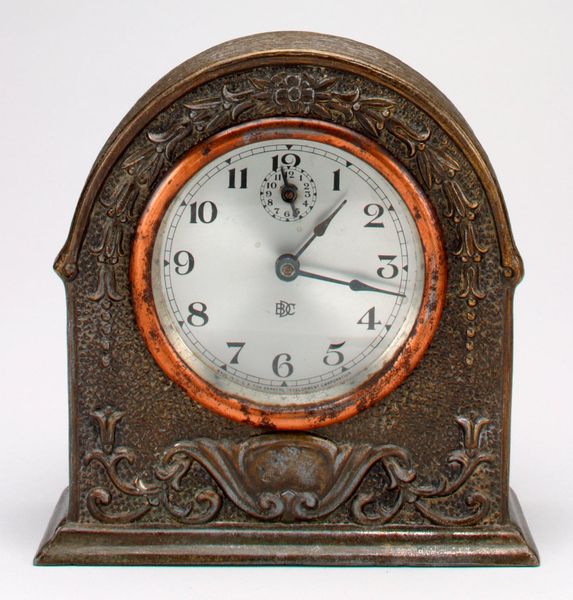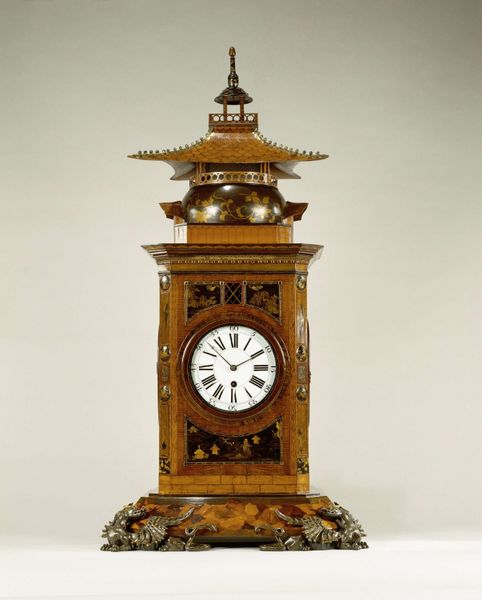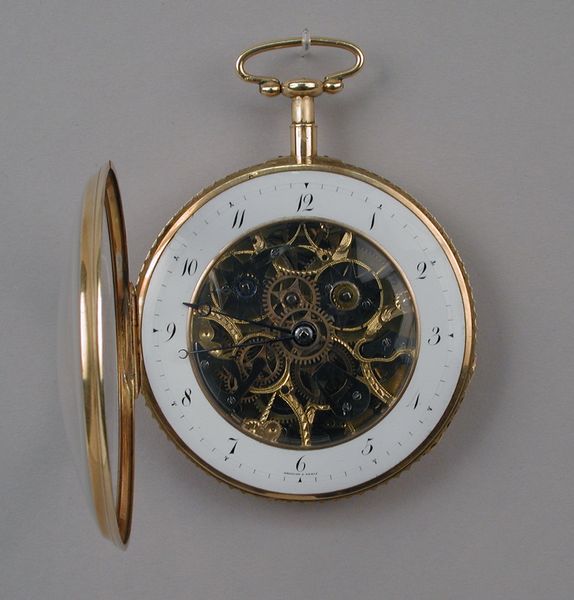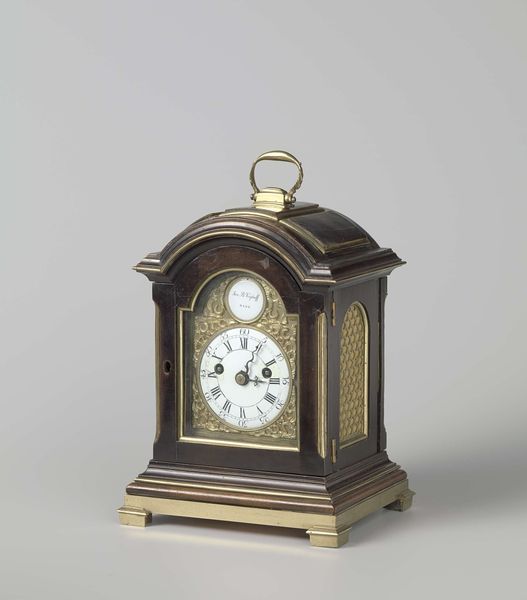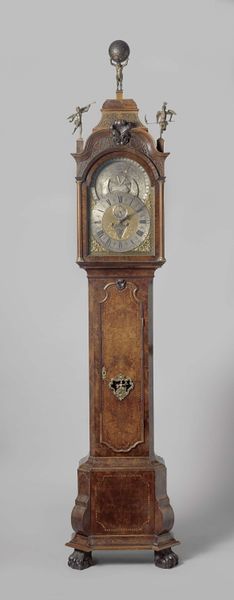
Clock (pendule d'officier) 1795 - 1805
0:00
0:00
brass, metal, sculpture
#
neoclacissism
#
brass
#
metal
#
sculpture
#
sculpting
#
geometric
#
sculpture
#
decorative-art
Dimensions: Overall: 8 7/8 × 5 1/2 × 4 1/8 in. (22.5 × 14 × 10.5 cm)
Copyright: Public Domain
This gilded bronze clock was made by the firm of Meuron et Compagnie in Geneva and Paris during the late 18th century. The clock's design, adorned with classical motifs like laurel wreaths and a serpent handle, reflects the Neoclassical style that was in vogue at the time. It's known as an "officer's clock," suggesting it was made for someone of high status, perhaps even for the military elite, who would carry it with them in their travels. The clock’s opulence reveals something of the vast wealth accumulated in France during this period, but also the seeds of discontent that would soon erupt in the French Revolution. Did the commissioner of the work support the existing social order, or did they have more progressive views? Understanding this clock fully requires us to delve into the economic and political conditions of late 18th-century France, alongside the networks of craft production and consumption that sustained such luxury goods. Historical archives, trade records, and studies of material culture can all shed light on its significance.
Comments
No comments
Be the first to comment and join the conversation on the ultimate creative platform.
